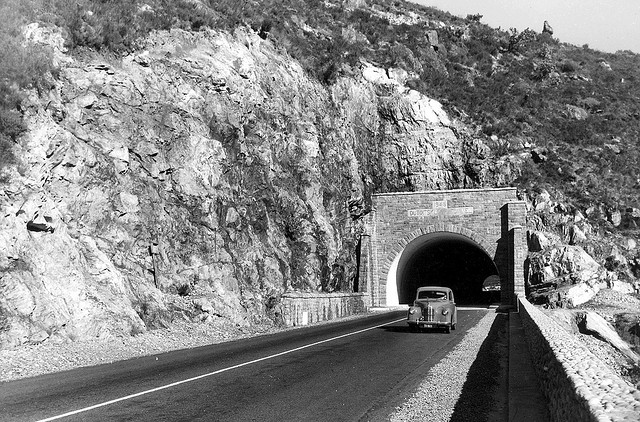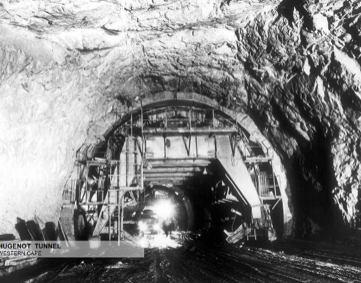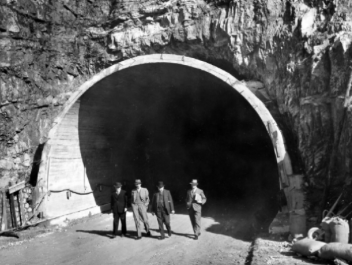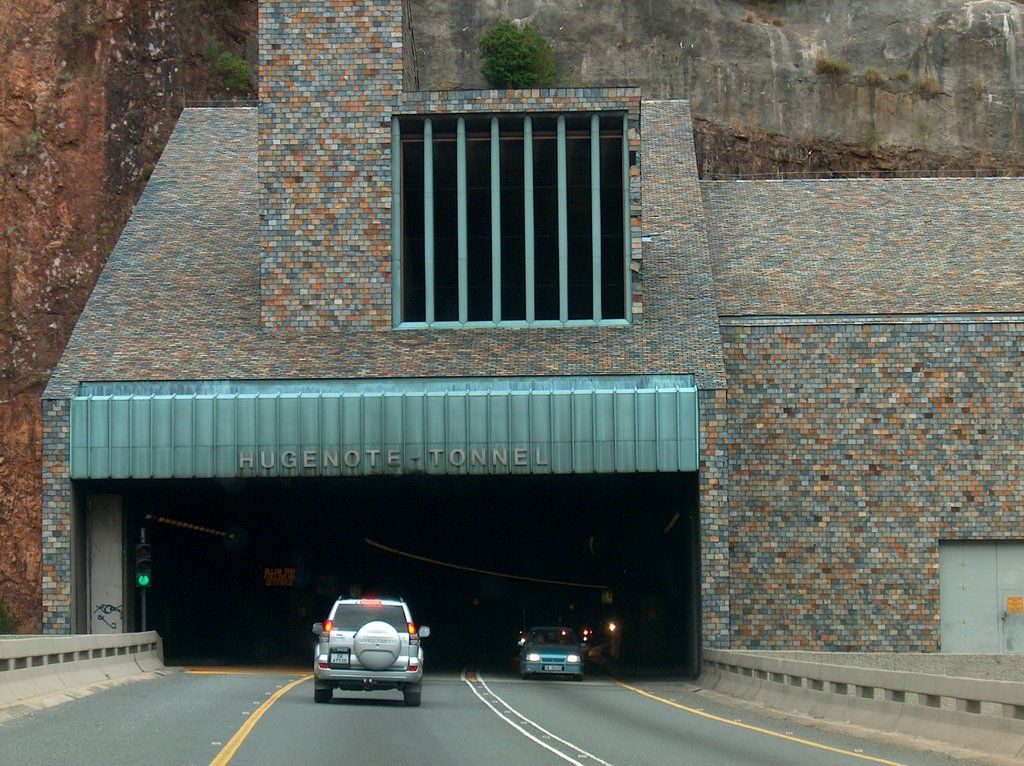Anyone who lives in the Western Cape has probably driven through the Huguenot Tunnel, which cuts through the Du Toits Kloof mountains, at least once in their lifetime. Did you know that it is the longest tunnel in the country?
The history of the Huguenot Tunnel is closely tied to the Du Toits Kloof Pass, which is named after French Waldensian Francois Du Toit.
Du Toit arrived in the Western Cape as a refugee, along with the Huguenot family, who had fled religious persecution in France. On arrival, he acquired a piece of land to farm on from Dutch authorities. He named this farm Kleine Bosch, and it was located just below the Hawequa Mountains
In 1778, Governor Van Plettenberg suggested that a wagon road be constructed. Four decades passed before anything came of this suggestion. A German farmer named Detlef Siegfried Schonfeldt, who was a former lieutenant in the 45th Württemberg Hussars and owned a farm in what was already known as Du Toits Kloof, approached the local farming community – which included areas such as Stellenbosch, Paarl, Franschhoek and Worcester – and suggested that a road be built through Du Toits Kloof to benefit everyone.
The money for the construction process was raised, and Schonfeldt focused on constructing his section of the road over Kleigat, which many regarded as the toughest section to build through. In two short years, he had built a wagon road over it. However, constructing this particular section was expensive and depleted the overall road construction fund.
Schonfeldt approached the government for further financial assistance to complete the road. Part of the money would go to hiring at least 60 labourers to provide enough manpower to complete the project within four months.
The authorities investigated Schonfeldt’s proposal, as they believed what had already been built would be sufficient to serve as a decent road. As a result, his request for funding was turned down, but the matter was raised again in 1858 by a civil engineer named George Pilkington. Due to a lack of funding, however, the project was not revived.
Jannie le Roux, a farmer who owned a piece of land called Verdun, also built his own private donkey cart route in the area. He settled and started farming at Verdun at the end of World War I, and built this road to access his various camps. This road, however, was not for the faint of heart, and for his own personal safety he built a second road higher up on the slope. The second road was better constructed than the first, and can still be seen running 600 feet below today’s pass.
In 1935, the National Road board decided that the plans for building a proper pass had to be revived.
Five years later, a government engineer named PA de Villiers conducted a survey of the area, and it was decided to go ahead with the plan to build a road through Du Toits Kloof. Not too long afterwards, World War II broke out, and South Africa was asked to host a number of Italian prisoners of war and approximately 10 000 were detained in Worcester.
This was advantageous, as Italians were considered among the best road and pass builders in the world. Government offered the prisoners an exchange of food and accommodation for building the Du Toits Kloof Pass.

By 1945, the pass has nearly been completed, but as the war had come to an end, the Italians had to be repatriated. The completion of the pass was undertaken by local labourers.
To celebrate the completion of the pass, a massive aluminium cross was carted to Huguenot Top, and it can still be seen here today.

A rush of traffic was noted on the pass in the 1970s, and in 1973, plans to build the Huguenot Tunnel were conceived. Construction started in 1984, and was undertaken in two phases.
Excavation teams started at either side of the mountain and worked their way toward the centre using the drill and blast method. Support portals, along with tunnels, drainage and ventilation systems were also incorporated.
Approximately 200 labourers, 50 artisans and 15 managerial staff were directly employed at the height of the construction period between 1984 and 1987, and some 35 consultants in various professions contributed to the project between 1975 and 1988.
The tunnel cost R202-million to build, and the added costs of improvements to road infrastructure on its eastern side inflated this figure to R500-million.
Half a million cubic metres of rock was excavated in the building of the tunnel.

Today, traffic flow within the tunnel is monitored by 34 cameras found within, which are able to trigger an alarm in case of any emergency such as a stopped car. It is also fully lit 24 hours per day, and a powerful air conditioning system works constantly to eliminate emissions and retain high levels of air quality.
Tunnel fires are a source of concern, and while there have been a number of small fires within the tunnel over the years, only one fatality was recorded in 1994. Fire sensors can be found every 24 metres, and there are side tunnels which can be accessed for emergency evacuation.
On average, a total of 8500 vehicles pass through the tunnel daily, and peaks are usually noted during school holidays. Its highest volume ever recorded was in 2002, when 18 200 vehicles passed through on April 26.
Accidents within the tunnel are a very rare occurrence, but they do often occur before vehicles enter.
Picture: Twitter/Concrete Tunnels

